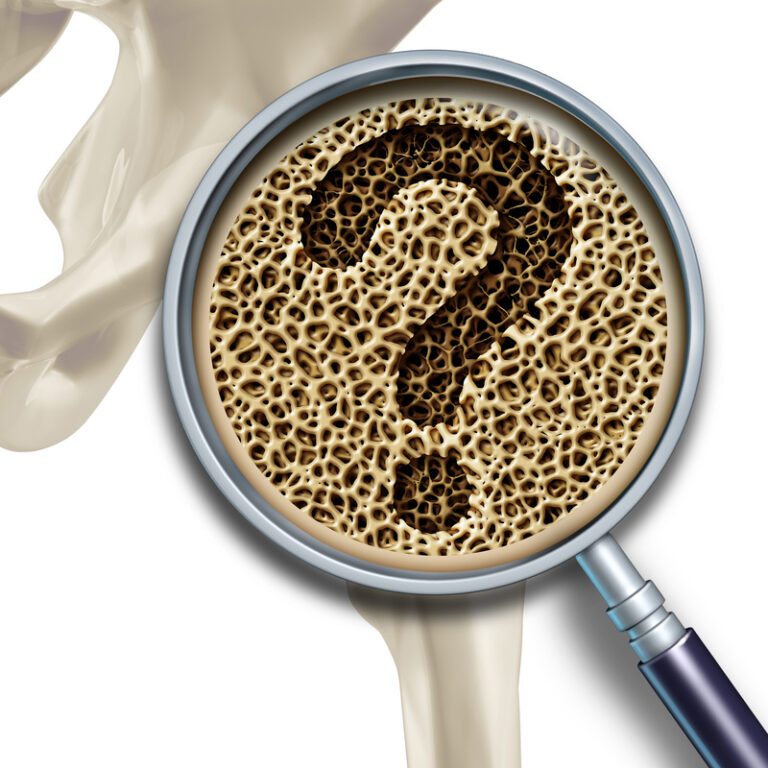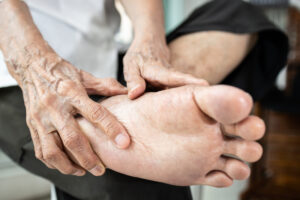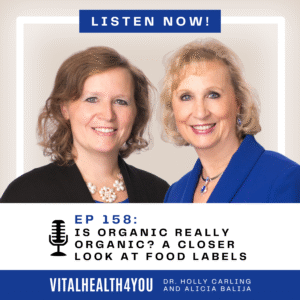Bone density (or the lack thereof) has become a topic of increasing concern. Statistically, over the age of 50, one in two women and one in eight men in the United States will experience a fracture due to osteoporosis. That’s staggering! Even more surprising is that it is no longer limited to the elderly. Loss of bone density is impacting our younger population at a significant rate.
As always, my main question is WHY? With hundreds or even thousands of years of stability, why is it suddenly increasing? There are the typical few questions that compose the generally recognized method of risk assessment. Those include questions about age, previous fractures, parental history of hip fractures, smoker, hormonal status, underweight and whether or not you need your arms to assist yourself in standing up from a chair. But what about one of the most important risk factors – your nutrition?
Nutritional factors are not just about calcium, the first element that comes to mind. It is, along with other factors a fractional part of nutritional concerns. Sugar is another concern. Sugar leaches calcium from the bones. Sodas are one of the biggest contributors to osteoporosis, and in fact are considered by some a greater contributor than hormones are. This is because sodas not only contain sugar which leaches calcium, but caffeine, which also leaches calcium. But that’s not all. The worst is the phosphoric acid used to give the bubbly carbonation. Phosphoric acid competes with calcium and shoves it out of the bones. Sodas contribute to bone fragility in three ways! Phosphoric acid makes bones more brittle. Kids drinking sodas on a regular basis are more likely to break a bone than kids who don’t drink sodas, especially if involved in sports activities.
As mentioned earlier, calcium is a critical component of the nutritional picture. However, more important is what you do with the calcium. If you don’t digest the calcium your body can’t use it. The primary enzyme needed for calcium metabolism is hydrochloric acid. Most people with osteoporosis also have digestive issues. Since hydrochloric acid naturally diminishes with age, the elderly is more prone to incomplete calcium digestion and therefore more prone to osteoporosis. However, that is quickly changing. Since a majority of Americans are stressed, their digestion is compromised, and osteoporosis is occurring in younger and younger age groups. Those taking antacids are particularly susceptible since they are robbing the stomach of the very hydrochloric acid needed to break down calcium. A misconception of hydrochloric acid is that it causes heart burn. In fact, your body’s own naturally occurring acid enzymes DO NOT damage the stomach lining. An absence of hydrochloric acid causes the body to ferment the food instead of enzymatically digesting it. This fermentation process (or rotting) of food causes the release of organic acids that burn (called “heart burn”) and cause gas. Supplementation with Betaine Hydrochloride (the vegetable source of the missing enzyme, hydrochloric acid) is critical to not only heal the stomach issues, but to break down the calcium small enough to be absorbed into the bones and tissues.
The form of calcium you take is equally important. Calcium Carbonate, a cheap form of calcium and found in most supplements is ranked as the least absorbable form of all the calcium’s. It is the compressed remains of shells and skeletons. Oyster shell and coral calcium are also difficult to break down. Calcium Citrate Malate and Calcium Lactate are the best absorbed forms of calcium, but much more difficult to find. Milk, by the way is not a good way to get calcium in the bones despite years of programming that it is. In fact, most doctors will tell you to STOP drinking milk when diagnosed with osteoporosis!
Vitamin D is important to regulate calcium and phosphorus. However, you need NATURAL Vitamin D, not synthetic. Synthetic forms are called “calciferol”, “irradiated ergosterol”, “ergocalciferol”. These forms are highly toxic. Natural Vitamin D is called cholecalciferol and is found in egg yolk, fish oil and a number of plants. Exposure to sunlight also supplies Vitamin D to the body.
Many other nutritional elements are needed for healthy bones. You need Essential Fatty Acids to uptake the calcium properly, along with the synergistic minerals such as phosphorus (not phosphoric acid), magnesium and others. True Vitamin C (NOT ascorbic acid or calcium ascorbate), iron, zinc, copper, Vitamin K, boron, manganese, chromium, and the Vitamin B-Complex all play important roles in bone and collagen formation. These all need to be metabolized properly as well.
Protein is critical for bone health. Bone is 30% protein matrix and 95% of the matrix is collagen fiber. A misconception about protein is that increased protein intake increases urinary excretion of calcium. While this is true, there is no evidence that the calcium is pulled from the bones.
Many popular drugs contribute to osteoporosis. Prednisone and other glucosteroid treatments induce osteoporosis. Stomach medications such as Prilosec, Nexium, Zantac and similar medications contribute to osteoporosis by inhibiting the body from properly digesting calcium and the other nutritional co-factors needed for bone health. In fact, medications in the class of drugs called bisphosphonates (such as Fosamax, Evista, Miacalcin, Actonel, etc.) are used for osteoporosis but interfere with the normal function of osteoclasts. They literally “fossilize” your bones (makes them dead). Bone is not a static organ. Making new bone is always a balance between building up and breaking down, not just stopping osteoclasts activity.
Exercise is another important factor in preventing osteoporosis. Impact exercise is important for bone building, assisting the body in laying down calcium in the bones.
In summary, building bone is not simply a calcium or drug remedy. There are many components that must all be present as they are synergistic in their actions. Bone, as a living entity must be treated as such. And don’t forget digestion! Digestion tends to be the root of the issue either directly or indirectly!
©2005 Holly A. Carling, O.M.D., L.Ac., Ph.D.







